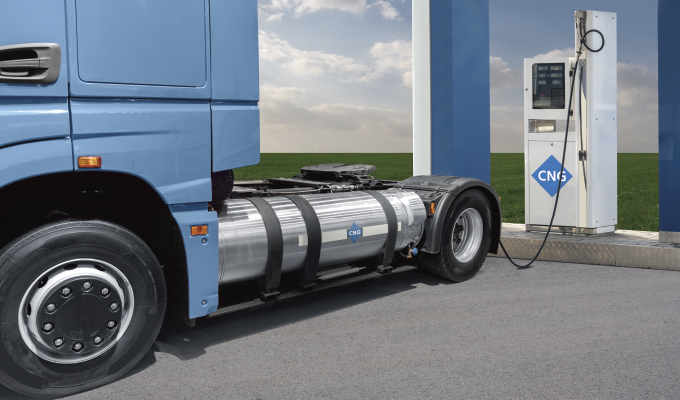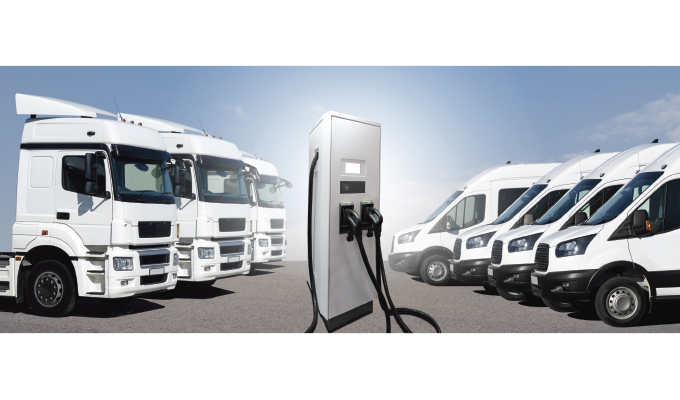Today, many organizations are exploring a variety of strategies to meet various ESG goals and mandates. From a fleet perspective, this often means finding new, innovative ways to reduce a fleet’s carbon footprint to align with and support the company’s overall sustainability strategy. For many, the initial focus of these efforts is on electric vehicles (EVs). However, while EVs continue to garner the most headlines, the reality is that EVs aren’t yet a viable option for many fleet applications, particularly for vocational fleets with highly specialized medium- and heavy-duty units.
While EVs may be the preferred option in a growing number of fleet applications – especially as OEMs introduce electric versions of popular vocational fleet models—there are certainly other options available as well. These options include alternatives fuels such as propane (LPG), compressed natural gas (CNG), and hydrogen (H2) along with other carbon reduction strategies including fleet rightsizing and vehicle spec optimization.
A misstep we often see when organizations begin to explore sustainable strategies for their fleet is the inclination to prioritize EVs while ignoring or excluding all other viable options. To help you craft a well-rounded sustainability solution that aligns with the needs of your business, here’s an overview of the options available to reduce your carbon footprint beyond relying solely on EVs.
PROPANE (LPG)
Propane, or liquefied petroleum gas (LPG), is a clean-burning alternative fuel that is popular in many medium-duty (class 4 to 6) fleet applications. The fuel’s high-energy density (compared to CNG), low emissions, and low cost (as compared to gasoline and diesel), makes it an appealing option for fleet operators looking to reduce their carbon footprint and minimize fuel costs. Additionally, the transition to propane-fueled vehicles can be seamless.
While the upfront cost of these vehicles is slightly higher than comparable gasoline or diesel-powered units, the cost of the propane fuel itself is typically much lower and fleet operators can realize an ROI on their investment quickly.
In terms of refueling, access to propane fueling is well established across the United States. Many vocational fleets that operate from a central location typically opt for an onsite fueling station. Fortunately, the capital investment for an onsite station is reasonable and many suppliers offer cost-effective leasing options.
COMPRESSED NATURAL GAS
Compressed Natural Gas (CNG) is another low emission alternative fuel. While CNG is certainly an option for class 2B to 5 trucks and vans, larger vocational units (class 6 to 8) are often best suited for CNG. The transition to CNG typically requires a higher upfront capital investment and there are several key factors that will determine whether CNG can play a role in your fleet operations.
CNG-powered vehicles tend to work best in long distance fleet applications, especially heavy-duty semi-trucks. Due to the nature of the fuel, vehicles will require a natural gas conversion although CNG engines and fueling systems are available for some heavy-duty units.
The available public fueling infrastructure is also sparse and most companies who add CNG-powered vehicles to their fleet mix opt to install onsite fueling CNG fueling stations. The cost to install an onsite fueling station can vary based on size, location, storage capacity, and design.
You’ll need to carefully examine the various pros and cons associated with CNG to determine if it is a potential fit for your fleet. To learn more about the benefits of CNG, be sure to read this story which highlights how Holman helped one customer transition to CNG-powered semi-trucks (holman.com/resources/holman-partners-with-tops-friendly-food-markets-in-alt-fuel-fleet-solution/).
HYDROGEN
While still very much a niche alternative fuel solution, hydrogen fuel cell vehicles are beginning to gain momentum. Today, hydrogen fuel cell technology can be found in a handful of passenger vehicles and is soon to be available in light-duty trucks. There are also options in the heavy-duty sector – class 8 tractors – which can deliver longer range (over 400 miles) and quicker fueling with zero emissions. However, this technology and the infrastructure to support these vehicles is still in its infancy and it is primarily only available in California currently.

RIGHTSIZING
Of course, there are also a number of ways to reduce your fleet’s carbon footprint without transitioning to alternatives fuels. In addition to battery-powered, all-electric vehicles (BEV), there are several hybrid (HEV) and plug-in hybrid (PHEV) models available that will allow you to begin to reduce your carbon footprint with little-to-no change to your current fleet operations. Additionally, there are other non-fuel related strategies that can help you reduce emissions and operate a greener fleet.
Recent global macroeconomic trends have altered the way many organizations conduct business. Now, many fleet operators find themselves reassessing their fleet operations to better align with the reality of their business today. If you find yourself in a similar scenario, take this opportunity to potentially right size your fleet. Using telematics and analytics, you may find instances where multiple vehicles are being used in a role for which one vehicle could do the job, or you might identify units that are simply no longer efficient. Retiring these underutilized and inefficient vehicles allows you to make incremental strides toward your sustainability goals.
Similarly, re-examining your vehicle specifications may yield opportunities to reduce fuel consumption and maximize efficiency. There’s an opportunity to replace a light-duty pickup truck with a hybrid SUV without hampering productivity. Or you may find that simply transitioning to a smaller, more fuel-efficient engine option will not only improve emissions but also reduce fuel costs.
EMBRACING HYBRIDS
As you can see, there are several terrific options for improving your fleet’s sustainability. Whether it is transitioning to EVs, adding alternative fuel units to your fleet mix, or simply opting for smaller, more fuel-efficient vehicles, there are a variety of strategies to reduce your carbon footprint. It is also important to keep in mind that there isn’t a one-size-fits-all approach for fleet sustainability, and you will find yourself embracing a solution that incorporates many of these options to varying degrees.
As we work with customers to develop their fleet sustainability strategy, we always advise them to begin their journey with clear intent, well defined goals, and, most importantly, a willingness to at least consider all available options. This approach will ensure you have the proper vehicle for every application while also implementing a solution that allows you to meet your specific sustainability objectives.
The good news is that you don’t need to wait to begin your journey to a more sustainable fleet. You can start with an initial pilot program or a small portion of your fleet. You can then build on this initial success, gain some momentum, and make the overall transition much easier. Remember, you don’t have to navigate this road alone; fleet management companies are here to help make adopting sustainable fleet solutions as seamless as possible.
About the Author
Ed Powell is the director of consulting services at Holman.
To learn more about Holman’s fleet management solutions and holistic sustainability strategies, visit www.holman.com/fleet-management.




